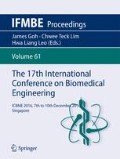Abstract
Drowsiness is a major patron to road accidents. Detection of drowsiness while driving is a challenging objective in accidents avoidance systems. This study reports a new index to assess the drowsiness state of drivers using Joint Time-frequency analysis of Electroencephalography (EEG). Fifteen healthy male participants proffered in this study by performing a tedious driving task on a static simulator for 60 min. The subjects are deprived of sleep for at least 18 hrs and sleep music (Delta waves) played in the background, induces sleep during the task. Acquisition of EEG signals was implemented by eight channel Octal Bio-Amplifier (AD Instruments) at a sampling frequency of 1000Hz. The electrodes positioned at the four lobes of the brain namely Frontal, Temporal, Parietal, and Occipital lobes and further analysis has been carried out in MATLAB™ 2007b (Math works, Inc., USA). The EEG signals are de-noised by Chebyshev filter (0.5-40 Hz) and subsequently decomposed into various rhythms of EEG such as Beta (CD5: 14-30 Hz), Alpha (CD6: 8-13 Hz), Theta (CD7: 4-7 Hz), and Delta (CA7: 0.5-3.5 Hz). Two parameters viz., Relative Wavelet Packet Energy (RWPE) and Power within the RMSD (PRMSD) are computed in this study to analyse the driving performance of the subjects against the subjective assessment inferred from the video recordings. The parameters RWPE, PRMSD within Beta and Alpha has reduced relatively in the Parietal lobe, occipital lobe, and temporal lobe as the subjects fall into the drowsy stage. This analysis is clinically correlated as the cortical activity reduces slowly during the onset of sleep. It is clearly evident that these features are significant (p< 0.05) in the detection of drowsiness with Confidence Interval of 14. This study also reports a significant correlation (p< 0.05) between PRMSD of Total mean with Active mean and Drowsy mean with R2 value of 0.82.
Access this chapter
Tax calculation will be finalised at checkout
Purchases are for personal use only
Preview
Unable to display preview. Download preview PDF.
References
CONNOR. J., R. NORTON, S. AMERATUNGA, E. ROBINSON, I. CIVIL, R. DUNN, J. BAILEY, R. JACKSON, “Driver sleepiness and risk of serious injury to car occupants: population based case control study” Br. Med. J., 324 (7346) (2002), p. 1125.
Roads and Traffic Authority, NSW,2011, “Heavy truck crash data analysis: single vehicle crashes, NSW Centre for Road Safety, RFAC Meeting, September” http://www.rta.nsw.gov.au/roadsafety/downloads/accident_statistics_dl4.html (2011).
BELYAVIN, A., WRIGHT, N.A.,1987 “Changes in electrical activity of the brain with vigilance, Electroencephalography and Clinical Neurophysiology, 1987,66,137-144.
KECKLUND, G., AKERSTED, T.,1993, “Sleepiness in long distance truck driving: An ambulatory EEG study of night Driving”, Ergonomics, Vol.36, pp, 1007-1017.
CHIN-TENG LIN., RUEI-CHENG WU., TZYY-PING JUNG., SHENG-FU LIANG., TENG-YI HUANG.,2005. “Estimating Driving Performance Based on EEG Spectrum Analysis”., EURASIP Journal on Applied Signal Processing 2005:19, 3165–3174.
JAGANNATH M, BALASUBRAMANIAN V, 2014. Assessment of early onset of driver fatigue using multimodal fatigue measures in a static simulator. Applied Ergon. 2014 Jul;45(4):1140-7. DOI: 10.1016/j.apergo.2014.02.001. pub: 2014 Feb 26.
Traffic Index for country,2016 (http://www.numbeo.com/traffic/rankings_by_country.jsp)
VANDNA SAINI AND REKHA SAINI, “Driver Drowsiness Detection System and Techniques” IJCSIT, Vol. 5 (3), 2014, 4245-4249. Road Safety Information, Rospa, “Driver fatigue and Road accidents.” (www.rospa.com, 2011)
The National Highway Traffic Safety Administration (http://www.nhtsa.gov/).
Real Time Traffic Accident Statistics (http://www.icebike.org/real-time-traffic-accident-statistics/)
J.A. HORNE, L.A. REYNER.” Driver sleepiness “, J. Sleep Res., 4 (S2) (1995), pp. 23–29
National Transportation Safety Board, 2010. Truck– Tractor semitrailer Rear-End Collision into passenger vehicles on Interstate 44, Near Miami, Oklahoma, June 26, 2009, Highway Accident Report, NTSB/HAR10/02, Washington, DC.
GRENÈCHE, J., KRIEGER, J., ERHARDT, C., BONNEFOND, A., ESCHENLAUER, A., MUZET, A. and TASSI, P., 2008. EEG spectral power and sleepiness during 24h of sustained wakefulness in patients with obstructive sleep apnea syndrome. Clinical Neurophysiology, 119(2), pp. 418-428.
SAHAYADHAS, A., SUNDARAJ K. and MURUGAPPAN, M., 2013. Drowsiness detection during different times of day using multiple features. Australasian Physical& Engineering Sciences in Medicine, pp. 18.
JI, Q. and YANG, X., 2002. Real-time eye, gaze, and face pose tracking for monitoring driver vigilance. Real-Time Imaging, 8(5), pp. 357-377.
PAPADELIS, C., CHEN, Z., KOURTIDOU-PAPADELI, C., BAMIDIS, P.D., CHOUVARDA, I., BEKIARIS, E. and MAGLAVERAS, N., 2007. Monitoring sleepiness with onboard electrophysiological recordings for preventing sleep-deprived traffic accidents. Clinical Neurophysiology, 118(9), pp. 19061922.
LIU, N., CHIANG, C. and HSU, H., 2013. Improving driver alertness through music selection using a mobile EEG to detect brainwaves. Sensors, 13(7), pp. 8199-8221.
HOMAN, R.W., HERMAN, J. and PURDY, P., 1987. Cerebral location of international 10–20 system electrode placement. Electroencephalography and Clinical Neurophysiology, 66(4), pp. 376-382.
BAREA, R., BOQUETE, L., MAZO, M. and LÓPEZ, E., 2002. System for assisted mobility using eye movements based on electrooculography. Neural Systems and Rehabilitation Engineering, IEEE Transactions on, 10(4), pp. 209-218.
YOUNG, L.R. and SHEENA, D., 1975. Eye-movement measurement techniques. American Psychologist, 30(3), pp. 315.
RODRIGUEZ-IBANEZ, N., GARCIA-GONZALEZ, M., FERNANDEZ-CHIMENO, M. and RAMOS- CASTRO, J., 2011. Drowsiness detection by thoracic effort signal analysis in real driving environments, Engineering in Medicine and Biology Society, EMBC,2011 Annual International Conference of the IEEE 2011, IEEE, pp. 6055-6058.
Author information
Authors and Affiliations
Corresponding author
Editor information
Editors and Affiliations
Rights and permissions
Copyright information
© 2017 Springer Nature Singapore Pte Ltd.
About this paper
Cite this paper
Vamsi, R., Suman, D., CH, N., Malini, M. (2017). Discrete Wavelet Transform based statistical features for the Drowsiness detection from EEG. In: Goh, J., Lim, C., Leo, H. (eds) The 16th International Conference on Biomedical Engineering. IFMBE Proceedings, vol 61. Springer, Singapore. https://doi.org/10.1007/978-981-10-4220-1_17
Download citation
DOI: https://doi.org/10.1007/978-981-10-4220-1_17
Published:
Publisher Name: Springer, Singapore
Print ISBN: 978-981-10-4219-5
Online ISBN: 978-981-10-4220-1
eBook Packages: EngineeringEngineering (R0)

